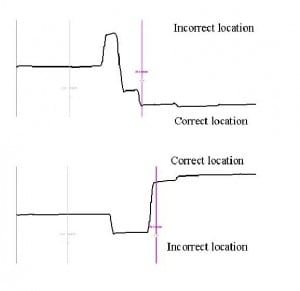 You are an astronaut trying to boldy go where nobody has gone before… but two naughty aliens have stolen vital bits of your rocket motor, leaving you stranded on an asteroid in a very boring corner of the solar system. Luckily the aliens are simple creatures who like to use the same craters to hide their booty: the colour of the alien tells you which one of the two craters (left or right) to look in.
You are an astronaut trying to boldy go where nobody has gone before… but two naughty aliens have stolen vital bits of your rocket motor, leaving you stranded on an asteroid in a very boring corner of the solar system. Luckily the aliens are simple creatures who like to use the same craters to hide their booty: the colour of the alien tells you which one of the two craters (left or right) to look in. 
 Your task is to work out which colour alien goes with which crater, but watch out as the tricky aliens keep swapping which crater goes with each colour!
Your task is to work out which colour alien goes with which crater, but watch out as the tricky aliens keep swapping which crater goes with each colour!
How do our brains learn rules linking what we see with where we direct action? This simple ability is important for many visual tasks ranging from crossing the road safely to playing chess. Research from myself and collaborators has used an eye movement “Rule switching” task in which people have to learn rules linking a coloured shape (displayed on a computer screen) and a saccade (eye movement) to the left or right to get a “reward” (a smiley emoticon). We have shown that adult patients with different types of neurological and psychiatric problems have difficulty with this task. For example, damage to the frontal parts of the brain can lead to problems in switching between rules and stopping oneself making eye movements based upon the old rule.
At the Lincoln summer scientist event this year we’ll be looking at how children of different ages do this task in order to gain insights into how rule learning and cognitive flexibility develops over the lifespan. For example, do children (whose brains’ haven’t finished developing yet) show any similarities to adults who have been unfortunate enough to have suffered strokes? Or, perhaps they might actually be better than older healthy participants who usually show a big performance “cost” when rules change and make more “corrective” saccades as if the old rule is still “active” somewhere in the brain.
 Of course, we’ve had to make the task a bit more fun for the young scientists who’ll be helping us with our research (hence the aliens and asteroids). We are also using our brand new Eyelink 1000 eye tracker for the first time as it allows “head free”eye tracking, making it much better for use with kids (see eye movements on U-tube).Visiting research student Rebecca Facey from the University of Exeter will also be helping out with the project.
Of course, we’ve had to make the task a bit more fun for the young scientists who’ll be helping us with our research (hence the aliens and asteroids). We are also using our brand new Eyelink 1000 eye tracker for the first time as it allows “head free”eye tracking, making it much better for use with kids (see eye movements on U-tube).Visiting research student Rebecca Facey from the University of Exeter will also be helping out with the project.
It promises to be a busy but fun week, so its: 5..4..3..2..1 blastoff! forLincoln summer scientist 2012.
References
Huddy VC, Hodgson TL, Ron MA, Barnes TRE, Joyce EM (2011) Abnormal negative feedback processing in first episode schizophrenia: evidence from an oculomotor rule switching task. Psychological Medicine 41(9), p 1805-1814.
Hodgson TL, Chamberlain M, Parris BA, James M, Gutowski NJ, Husain M, and Kennard C. (2007) The role of the ventrolateral frontal cortex in inhibitory oculomotor control. Brain, 130: 1525-1537.